Business owners and managers are always walking a fine line between expenses and revenue. If they're lucky, they spend more time on the latter side of that equation, but as the age-old economics saying goes, "You have to spend money to make money." The trick is to spend as little money as possible on items that will drive profits the most, but also to recognize when a major investment has the potential to pay off on a big way.
Digital displays have the makings of a significant profit driver without being a burden on the books. We can see your wheels turning already - performing the cost-benefit analysis of adopting such a marketing platform. To make the calculation a little easier, we've broken down the decision to leverage a digital signage platform into two boxes. If you can check both, you'll be able to boost your company's revenue and pay off the investment in no time.
1. Find the right system
Finding the display platform that best fits your needs is the crucial first step in building a better marketing presence and, ultimately, benefiting the bottom line. Think about it this way: Any small company would love a Super Bowl ad, but the cost would put some of those companies out of business. On the other hand, a company with a huge budget may choose not to go for the biggest possible adspace when a more strategic one will do.
We'll get to strategy more in a moment, but let's dwell on this first: What are the qualities you should look for in a digital signage platform, regardless of your company's size and budget?
- Flexibility and agility - the ability to use several screens to show different messages, the same message, rotating messages, or to have one screen cycle through a variety of ads.
- Wireless control - the ability to change the display at the touch of button from anywhere.
- Seamless technology - an interface that gets rid of legacy marketing materials and equipment and replaces it with a single, streamlined platform.
When your display has each of those three features, you can be sure it will generate revenue for the company faster than it will incur costs. By giving you more control, removing unnecessary infrastructure and catering to the exact needs of a particular moment, these types of platforms offer cost-efficient marketing solutions.

2. Build the right strategy
Of course, all the features in the world aren't enough to overcome a terrible marketing strategy. But a great strategy combined with a powerful system like the one described above has the potential to make ad-based revenue soar.
For example, point-of-purchase advertising is a common tactic used to upsell a customer as he or she prepares to make a purchase. With the right application of digital signs, your business can identify consumer habits and reach out with a compelling offer at the most opportune moment. Or maybe your company has a flash sale - what could be more dramatic than having all digital signs in the store suddenly switch to a countdown clock indicating how much time is left to find the best deals? How about restaurants that change their menus - wouldn't it benefit them to use a digital display that could keep up with latest food trends?
Your own marketing strategy will depend greatly upon the industry you're in and the clients you're trying to serve, but regardless, digital signage can bring out the best in your tactics. More than that, it can give you inspiration that would not have been possible with traditional materials. All of this goes back to your bottom line - Digital Social Retail estimates that using a digital display to promote a specific product can improve sales for that item by 60 percent. Think about what your business could do with that kind of improvement.
To learn more about the kinds of digital signage available and other related marketing tools, contact the experts at Digital Social Retail and set up a demo.







